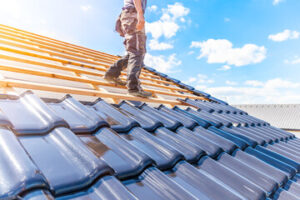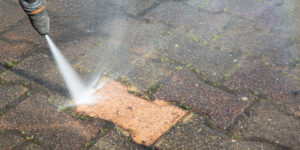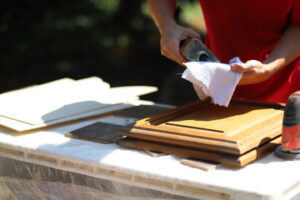Roofing companies play a crucial role in ensuring the safety and durability of residential and commercial properties. A roof serves as the primary defense against the elements, protecting the structure and its occupants from rain, wind, snow, and extreme temperatures. The expertise of roofing companies ensures that roofs are properly installed, maintained, and repaired to provide long-lasting protection and structural integrity.

Professional roofing services are essential for preventing issues such as leaks, water damage, and insulation problems, which can compromise the safety and comfort of a property. The complexity of roofing systems requires specialized knowledge and experience, making professional roofing companies a valuable resource for property owners. View Our Site to learn more.
The process of roof installation involves careful planning and precise execution to ensure optimal performance and longevity. Roofing companies assess various factors, including the slope of the roof, the type of materials used, and local weather conditions, to determine the most suitable roofing solution. Proper installation techniques are essential for creating a secure and weather-resistant roof. Roofing companies use high-quality materials and follow industry standards to enhance the durability and performance of the roof. Professional installation minimizes the risk of structural issues, water infiltration, and energy loss, providing long-term protection and comfort for the occupants.
Maintenance and regular inspections are essential for preserving the condition and performance of a roof. Roofing companies offer maintenance services to identify and address potential issues before they escalate into costly repairs. Routine inspections help detect signs of wear and tear, such as loose shingles, damaged flashing, and clogged gutters. Prompt repairs prevent water damage, mold growth, and structural deterioration, extending the lifespan of the roof. Roofing companies also provide cleaning services to remove debris, moss, and algae that can accumulate on the surface of the roof and cause damage over time. Regular maintenance ensures that the roof remains in optimal condition and continues to provide reliable protection.
Roof repairs are often necessary due to the impact of weather, aging, and accidental damage. Roofing companies have the expertise and equipment to diagnose and repair a wide range of roofing issues. Common repairs include fixing leaks, replacing damaged shingles, sealing gaps, and repairing flashing. Emergency repair services are available for situations where immediate action is required to prevent further damage to the property. Professional repairs restore the integrity of the roof and prevent secondary issues such as water damage, insulation problems, and structural instability. Roofing companies use durable materials and advanced repair techniques to ensure long-lasting results.
The selection of roofing materials significantly influences the performance, appearance, and lifespan of a roof. Roofing companies offer a variety of materials, including asphalt shingles, metal roofing, clay tiles, and composite materials, each with its own advantages and characteristics. Asphalt shingles are popular for their affordability, versatility, and ease of installation. Metal roofing provides durability, energy efficiency, and resistance to extreme weather conditions. Clay tiles offer a distinctive aesthetic and exceptional longevity, while composite materials combine the benefits of multiple materials for enhanced performance. Roofing companies help property owners choose the most suitable material based on their budget, architectural style, and environmental conditions.
Roof replacement is a significant investment that requires careful planning and execution. Roofing companies conduct thorough assessments to determine the condition of the existing roof and the need for replacement. Factors such as the age of the roof, extent of damage, and structural integrity influence the decision to replace the roof. Professional roofing companies provide detailed estimates and project timelines to ensure transparency and minimize disruption to the occupants. The replacement process involves removing the old roofing materials, inspecting the underlying structure, and installing the new roof using industry-approved techniques. Proper installation of a new roof enhances the property’s value, energy efficiency, and overall performance.
Energy efficiency is a growing consideration for property owners when selecting roofing solutions. Roofing companies offer energy-efficient options designed to reduce heat absorption and improve insulation. Reflective roofing materials, such as cool roof coatings and metal panels, reflect sunlight and reduce heat transfer, lowering indoor temperatures and reducing the demand for air conditioning. Proper insulation and ventilation systems installed by roofing companies enhance the roof’s ability to regulate temperature and moisture levels, improving overall comfort and reducing energy costs. Energy-efficient roofing solutions contribute to environmental sustainability and long-term savings for property owners.
Storm and weather damage can significantly impact the integrity and performance of a roof. Roofing companies provide storm damage assessment and repair services to address issues caused by heavy rain, hail, high winds, and snow accumulation. Inspections following severe weather events help identify hidden damage and prevent further deterioration. Temporary solutions, such as tarping and sealing, are applied to prevent water infiltration and protect the interior of the property until permanent repairs can be completed. Roofing companies work with insurance providers to facilitate the claims process and ensure that the necessary repairs are covered. Professional storm damage restoration restores the strength and functionality of the roof.
Roofing companies also specialize in enhancing the aesthetic appeal of properties through customized roofing designs and materials. The color, texture, and style of roofing materials significantly influence the overall appearance of a building. Roofing companies provide design consultations to help property owners select materials and patterns that complement the architectural style and enhance curb appeal. Advanced roofing technologies, such as architectural shingles and patterned metal panels, allow for creative and distinctive roofing designs. The visual impact of a well-designed roof contributes to the property’s market value and overall attractiveness.
Commercial roofing presents unique challenges and requirements compared to residential roofing. Roofing companies that specialize in commercial projects have the expertise and resources to handle large-scale installations and complex roofing systems. Flat and low-slope roofs are common in commercial buildings and require specialized materials and installation techniques to ensure proper drainage and weather resistance. Roofing companies install and maintain commercial roofing systems, including single-ply membranes, built-up roofing, and modified bitumen systems, to provide long-term durability and performance. Regular maintenance and repairs minimize the risk of business disruptions and protect valuable assets within commercial properties.
Roofing companies also offer roof inspection and certification services for real estate transactions and property assessments. Pre-purchase inspections provide valuable information about the condition and lifespan of the roof, helping buyers make informed decisions. Certification reports detail the roof’s structural integrity, material quality, and potential repair needs, providing assurance to buyers and lenders. Roofing companies conduct thorough inspections using advanced techniques, such as infrared imaging and moisture detection, to identify hidden issues and ensure comprehensive evaluations. Accurate inspection and certification services enhance transparency and confidence in property transactions.
The role of roofing companies extends to the installation of roofing accessories and enhancements. Skylights, roof vents, and solar panels are popular additions that improve the functionality and energy efficiency of a roof. Roofing companies ensure that these installations are integrated seamlessly with the existing roofing system to prevent leaks and structural issues. Proper installation techniques and high-quality materials ensure that roofing accessories enhance the roof’s performance and longevity. Roofing companies also offer maintenance and repair services for these accessories to ensure continued functionality and protection.
The expertise and professionalism of roofing companies are essential for ensuring the long-term performance and durability of roofing systems. Licensed and certified roofing companies adhere to industry standards and best practices to deliver high-quality results. Safety protocols and training programs ensure that roofing projects are completed without accidents or injuries. Warranties and service guarantees provided by roofing companies offer peace of mind to property owners, ensuring that the roof will perform as expected for years to come. The reliability and accountability of professional roofing companies make them a trusted partner for property owners seeking to protect and enhance their investment.
Investing in professional roofing services delivers long-term value and protection for residential and commercial properties. The combination of expert installation, routine maintenance, and timely repairs ensures that roofs remain durable, weather-resistant, and energy-efficient. Roofing companies play a vital role in safeguarding the structural integrity and comfort of a property, enhancing its market value and reducing the risk of costly damage. The ongoing advancements in roofing materials and techniques continue to improve the performance and longevity of roofing systems. As property owners increasingly prioritize energy efficiency, durability, and aesthetic appeal, roofing companies remain essential partners in achieving these goals.


